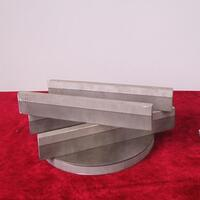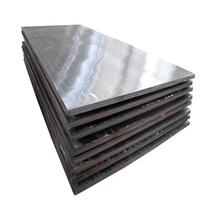1. Introduction
When you hear ‘metal clad,’ you might picture industrial sheds or electrical wiring—but in cutting-edge architecture, metal clad has evolved into a sophisticated design powerhouse. From sleek urban towers to rugged mountain retreats, architects are leveraging clad metals to create buildings that are not only visually striking but also resilient, sustainable, and low-maintenance.

Metal clad meaning goes beyond simple coverage—it refers to layered or composite materials where a base metal (like steel or aluminum) is bonded with a more corrosion-resistant or decorative metal (like zinc, copper, or stainless steel). This synergy delivers performance where traditional materials fall short.
2. Why Metal Clad Dominates Modern Facade Design
Metal clad facades—especially those using corten steel siding, zinc metal siding, or aluminum clad steel—are prized for their longevity, minimal upkeep, and evolving patina. Unlike paint or stucco, these surfaces age gracefully, often improving in character over time.
Take the corten steel facade: it forms a stable rust-like appearance that protects the underlying steel plate from further corrosion. This makes it ideal for exposed environments—coastal zones, high-altitude sites, or urban centers with heavy pollution. And while corten siding cost may seem high upfront, its 50+ year lifespan offsets long-term maintenance expenses.
3. Niche Applications: Beyond Basic Cladding
3.1. Standing Seam Systems for Weather-Tight Performance

Vertical standing seam metal siding and colorbond standing seam roofs are go-to choices for architects demanding precision and weather resistance. Systems like PAC CLAD HWP (High-Performance Wall) and PAC CLAD coping offer seamless integration with column covers and dormers—such as a zinc clad dormer—that maintain clean lines while shedding rain efficiently.
These systems often use aluminum clad sheet or stainless clad aluminum, combining light weight with corrosion resistance. The result? A metal clad building that performs in extreme climates without sacrificing elegance.
3.2. Corrugated and Textured Metal Facades
Exterior corrugated metal siding isn’t just for barns anymore. Designers now specify corrugated steel facade panels for their bold shadow lines and industrial-chic aesthetic. Paired with corten steel plate or 316 stainless steel plate, these systems offer both drama and durability.
For added visual depth, perforated plate or diamond plate steel sheets are used as screen walls or sunshades. Aluminum diamond tread plate and stainless steel checker plate bring texture while maintaining structural integrity—ideal for mixed-use developments or transit hubs.
3.3. Hybrid Clad Metals for Extreme Environments

In chemical plants, marine facilities, or geothermal zones, standard metals fail. That’s where alloy clad solutions shine. Titanium clad or inconel 625 overlay plates resist pitting and stress corrosion. Copper nickel clad and cupro nickel clad systems protect piping and structural elements in saltwater exposure.
Even electrical systems benefit: metal clad electrical wire and aluminum clad steel wire provide mechanical protection and EMI shielding in data centers or hospitals—proving that ‘metal clad’ spans far beyond architecture.
4. Material Innovations Driving the Trend
Modern clad metal meaning includes advanced bonding techniques like roll bonding, explosion cladding, and electroless nickel plating. These create seamless unions between dissimilar metals—such as aluminum clad stainless steel or stainless clad aluminum—without compromising conductivity or strength.
For insulation, aluminum clad pipe insulation wraps HVAC lines with a reflective, durable shell. Meanwhile, metal clad insulation panels integrate thermal breaks directly into the cladding system, boosting energy efficiency in steel clad houses and commercial towers alike.
5. Sustainability and Lifecycle Value
Metal clad siding is inherently recyclable. Zinc clad roofs, copper siding, and aluminum clad steel all contain high post-consumer content and can be fully reclaimed at end-of-life. This aligns with LEED and BREEAM certification goals.
Moreover, the longevity of a metal clad wall reduces the need for repainting, sealing, or replacement—cutting both cost and environmental impact. A well-designed steel clad inc project can outlive multiple generations of conventional cladding.
6. Conclusion
From PAC CLAD standing seam roofs to corten steel siding and titanium clad structural elements, metal clad is no longer just functional—it’s foundational to next-gen architecture. Whether you’re designing a metal clad house, a steel clad building, or an artful zinc facade, the right clad metals offer unmatched performance, beauty, and resilience. As material science advances, expect even more innovative applications of clad metals in the built environment.
Our Website founded on October 17, 2012, is a high-tech enterprise committed to the research and development, production, processing, sales and technical services of ceramic relative materials such as Unlock. Our products includes but not limited to Boron Carbide Ceramic Products, Boron Nitride Ceramic Products, Silicon Carbide Ceramic Products, Silicon Nitride Ceramic Products, Zirconium Dioxide Ceramic Products, etc. If you are interested, please feel free to contact us.
